Merchandising Step By Step
From coordinated patio accents to container gardening, Pamela Crawford explains why keeping it simple is simply the best way to go as a merchandiser.
When it comes to signage and displays, you’ve undoubtedly heard the term “silent salesmen.” But what is it about the word “silent” that makes the whole thing sound a little iffy? It’s safe to assume something important might be missing from the equation.
Pamela Crawford wants to make sure your silent salesmen are saying all the right things this spring.
Crawford is a container garden expert who is also an author of multiple container gardening books. Her container designs have been featured in Better Homes & Gardens and she recently debuted a new product line under the name Color Your Patio — coordinated patio accents.
In the following Q&A, Pamela explains the inspiration behind Color Your Patio and how its merchandising strategy can inspire sales in all departments of the garden center — turning an overwhelming experience into one that’s a little more manageable for every level of consumer.
What is Color Your Patio and what inspired the creation of this new line?
Crawford: Color Your Patio is an organized collection that makes it easy for garden center customers to transform their porch or patio.
I’ve designed wallflowers (art), pillows and rugs to coordinate with a garden center’s pottery and container garden. The collection features four different color schemes that were inspired by the flower colors of my container gardens.
This concept has been in the making for some time, starting with my background in landscape architecture. I’ve worked on more than 1,500 houses in Florida. The outdoor living areas of these homes were included as part of the deal. So I was always attempting then to connect the interior living areas of the house with the outside.
That’s something that can be quite difficult to do, and quite overwhelming, especially for a consumer.
When I went to accent my own deck, I wanted to get items that go well together. I figured it would take me a few hours of shopping to find what I needed. But it took days! I went to one rug dealer and had 2,000 rugs to pick from. Going through 2,000 of anything can be a bit daunting, and the worst part was trying to find something that went with it.
That’s when I realized we really need to create a solution to make it simple for people to perk up their patio.
In a broader sense, how can the Color Your Patio concept keep customers from getting overwhelmed by too many choices?
Crawford: First, the products are color coordinated, so someone can locate a rug that coordinates with wall art and pillows. Second, the collection has enough impact to really make a difference — a makeover with just accessories. The displays make figuring out what goes with what really simple.
Impact is a key player in the Color Your Patio strategy. We’re trying to emphasize the importance of portraying impact.
I think if you’re presenting the right products and the right colors, it doesn’t take a lot to change a space. Getting this message of “it doesn’t take a lot” across to your customers can be huge.
In regards to an outdoor living space, like a patio, many consumers think it’s this huge effort to create something, but with a little guidance and inspiration, hanging a couple pictures and rolling out a rug can transform a space in 10 minutes.
Why are before and after pictures important to the Color Your Patio display?
Crawford: Before and after photos are the only way to actually show the impact of what you’re putting together.
I learned this many years ago in landscape architecture. I was in charge of putting together rooms with a lot of different materials and components for photoshoots.
A woman I worked with kept saying, take before shots before you get started. I always thought that was overdoing it. But once everything was put together and we saw how people responded a lot more if we showed a before shot than if we did not.
That’s the only way they can see the real impact of what you’ve done. Consider the response you might get showing one container with one plant; then add another container next to it with two plants; then another container next to that with three. It’s a whole different ballgame if you have one container on display or photographed compared to a group of containers with multiple colors. Again, it’s about creating impact.
In addition to before and after images, you also use pictures that turn Color Your Patio into a step-by-step process. What’s the significance of that?
Crawford: When you boil it down, it’s really about making projects manageable and the decision-making process a simpler one.
Like before and after photos that show people you can have a huge transformation without having to do a whole lot, step-by-step photos reinforce much of the same.
Breaking down a process into steps makes it a point to show people a sequence for success. And this approach works for just about anything in the garden center — from water gardening features to container gardens to planting trees.
I’ve done this on the back of some of my container gardening books. I show a container with just a centerpiece, then with some plants around it. You show that sequencing, which is really great for showing people how to
do something.
If you’re able to do that well in your signage and displays, they naturally become improved silent salesmen, which can be so helpful if you’re slammed in the spring and you’re forced to pull members of your staff off the sales floor to help ring out customers.
What is it about patios that independent garden centers can take advantage of?
Crawford: The consumers’ want for aesthetics is growing by leaps and bounds. You walk into a furniture store or linen store and everything goes together.
I opened a catalog the other day and it showed entire rooms coordinated. Even the alarm clock matched with the garbage can. This is what consumers are looking for.
This is a huge opportunity in outdoor living spaces for us. We need to take the strain and thought process out of it.
Patios are really a transitional space between the indoor living room and the outdoor garden. And container gardens you create and sell just belong there. Garden centers can take outdoor living accents and furniture, like my Color Your Patio line, and arrange components of a container garden to coordinate with it.
I consider myself a goal shopper. I like to find something, buy it, put it in the car, take it home and then use it. Our customers are like that, too, and we need to start arranging our products to help them make that happen.


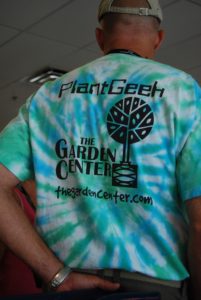



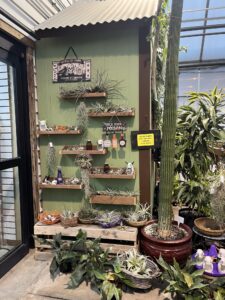
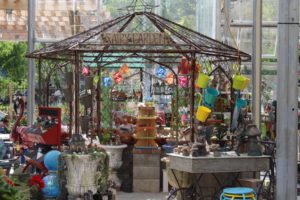
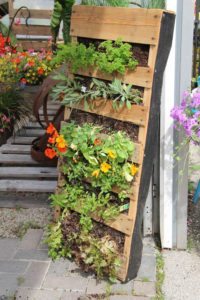
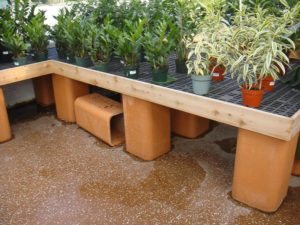

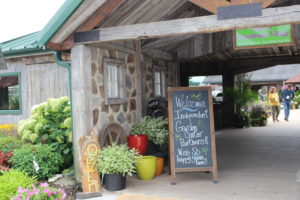
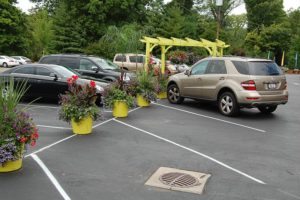
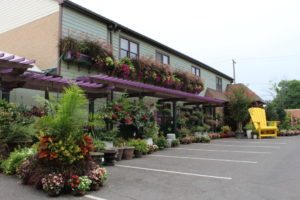
 Videos
Videos





